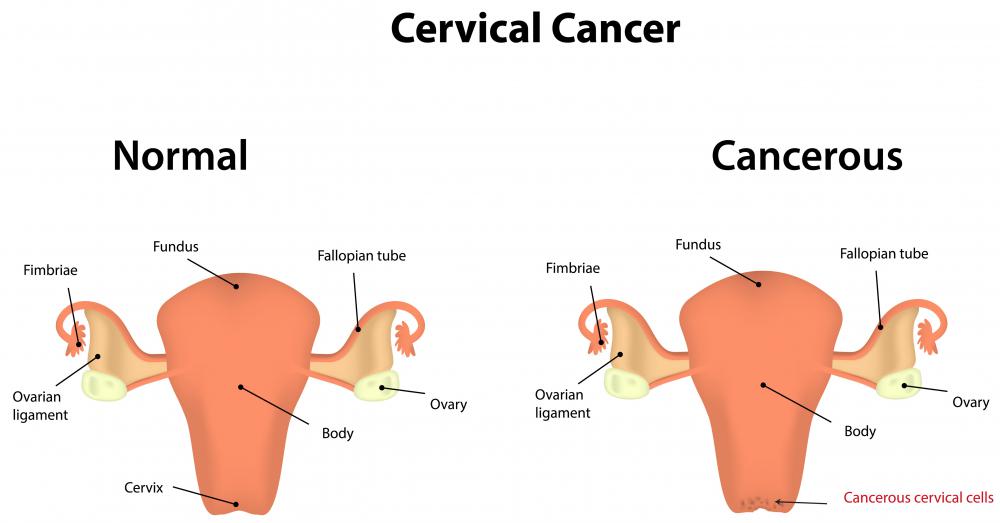At TheHealthBoard, we're committed to delivering accurate, trustworthy information. Our expert-authored content is rigorously fact-checked and sourced from credible authorities. Discover how we uphold the highest standards in providing you with reliable knowledge.
What Is Adenocarcinoma in Situ?
Adenocarcinoma in situ refers to pre-cancerous cells, usually found on the female cervix. They typically affect glandular cells and are a precursor for adenocarcinoma. This form of cervical cancer is more aggressive than others. When found while in situ, or only in its original location, it is much more easily treated. The condition is often discovered during a routine pap smear exam.
Patients with adenocarcinoma in situ may be given various treatment options. Pre-cancerous cells may be frozen or scraped off the surface of the cervix, although this is not always effective with this form of the disease. A partial or full hysterectomy may be required when cells seem to be spreading rapidly, as this could indicate a more aggressive form of the disease. Women of child-bearing age may be able to receive other treatments, although these are not always as effective and may allow cancerous cells the chance to regrow.

When adenocarcinoma in situ is in its earliest stages, aggressive therapy may not be needed. Each patient is diagnosed and treated individually. After treatment, frequent pap smear exams may be needed to rule out regrowth. Additional treatments may be necessary for those whose cancers have returned. Treatments may include chemotherapy, radiation therapy, and full hysterectomy if not performed upon diagnosis.

Many forms of adenocarcinoma in situ are caused by a particular strain of human papillomavirus (HPV). This is a sexually transmitted viral infection, similar to the strain which causes genital herpes. Most women who carry HPV have no symptoms, but it is a leading cause of cervical cancers. It can be prevented by practicing safe sex or by engaging in sexual activity with a monogamous, uninfected partner.

Cervical cancer, including adenocarcinoma in situ,can often be detected early through annual pap smears. This is an exam which involves inserting a small cotton swab into the cervix in order to collect a tissue sample. The tissue is examined and tested for cervical cancer and other abnormalities. Most women are advised to begin this exams yearly upon turning 18 years of age, or as soon as they become sexually active. Once a woman has gotten three consecutive normal pap smear results, she may be able to begin testing once every three years rather than annually.
AS FEATURED ON:
AS FEATURED ON:

















Discuss this Article
Post your comments